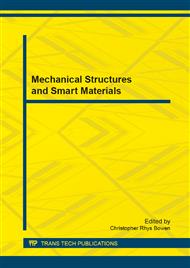p.374
p.378
p.385
p.389
p.394
p.400
p.404
p.408
p.413
Design and Analysis of Jujube Plantlet Uprising Machine
Abstract:
In this paper, the design of Jujube Plantlet Uprising Machine adopts plantlet uprising shovel fixed to the frame on the right side, using the three-point hitch of the tractor to adjust plantlet uprising depth, through a deep round dig depth stability limit, to take over operation, improve the efficiency of the plantlet uprising. Equipment is designed to provide technical support for a large number of high quality standardized jujube nursery, to laid the foundation calculation for large-scale jujube cultivation.
Info:
Periodical:
Pages:
394-399
Citation:
Online since:
January 2014
Authors:
Keywords:
Price:
Сopyright:
© 2014 Trans Tech Publications Ltd. All Rights Reserved
Share:
Citation:


